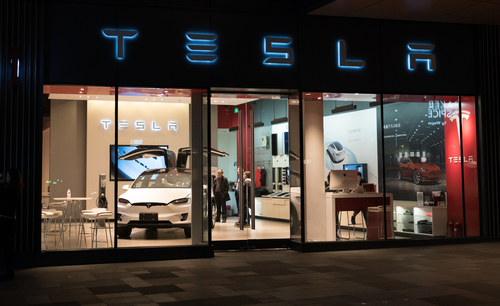
13 Mar Elon Musk and Tesla
When Elon Musk was in college, he thought three things held the most import for our day: the Internet, people living on more than one planet, and the progression of energy that’s green and eco-friendly. These were the purposes that he had in mind, and he’s been working pretty relentlessly on those objectives ever since. And, here’s the thing: he’s actually making it happen. He’s got ambitious plans to land the first humans on Mars in 2025, folks willing to risk everything to go and lead the way for generations to follow.
Mind blowing.
He’s also working close to home, too, developing electric vehicles that are sleek, fast, and environmentally clean.
Musk heads Tesla, the company known for its electric cars, with an enormous factory in California’s Silicon Valley. While only a section of the factory’s space is being utilized for current production demands, the company organizes to use the entire facility as they keep on develop and release future models.
The company doesn’t have to wait until then to be impressive. Take their Model S full-size sedan, for example. Here’s a car that was not intended to be operated by everyone. Rather, the initial goal was to prove that Tesla could produce cars that would contend other top sports cars. The goal was to produce a small amount of them to establish Tesla’s credibility first, and it definitely succeeded when the Model S was released. Interested about some of the specs on this spectacular car?
Its price tag is in the $100K range. Might also just get that on the table up front. But, the car can go 480 km before it needs to be charged.
Central to the car’s creation was a focus on making it aerodynamic. Even the door handles on the Model S are designed to reduce drag: they literally recede into the car, lying flush with the body.
Because these cars don’t require the same equipment as a combustion engine vehicle, the Model S has a lot area in the interior. It’s a sedan with the ability of seating 7 passengers! Yes, the standard seating setup is for 5, but you can add an additional rear-facing child seat, bumping passenger capacity to 7.
If you’ve got kids sitting in the back, though, you maybe pondering where you can put the stuff you’d normally insert a trunk. In the front! There’s storage under the front hood! Voila!
Another design feature developed to encourage higher battery yield and better performance overall? 97% of the car is assembled using lightweight aluminum. Those sheets of aluminum are then put into a huge production stamper to get the desired shape for the necessary parts.
The car is produced using robots, and is fine-tuned by those managing the process. Naturally, everything has to be definite so that the finished product is remarkable.
One of the things that’s so surprising to the driver when they first get behind the wheel of this car is the response that it gives. The TV turns on immediately, and that’s how the car performs, too.
One other thing? The inside of the vehicle has a 17-inch operating screen to control the numerous features that the car offers.
And as for the company’s next rollout? A third model is in the works, one that will be much more budget-friendly to the masses, while keeping the high standard of excellence this company has come to be known for.
Technological innovations like this are exciting for everyone; it means that solutions are being developed to counter today’s environmental problems. Musk’s company is making an innovative dent all over the world of green transportation, a necessary and important contribution in our time. Even though most of us can’t afford a Model S, the company is going to release a vehicle that will be more affordable for everyone.
Despite being a 7-seater, the Model S won’t be able to cover a bunch of people at once. In our everyday lives, the majority of us aren’t driving electric cars. Motorcoaches such as charter bus Maine remove up to 57 personal cars off the road, so riding in a motorcoach means you are helping to make our air cleaner, reducing the amount of emissions going into the environment.
(The data for this article came from this National Geographic documentary: https://m.youtube.com/watch?v=yRGy74AyT6A).



No Comments